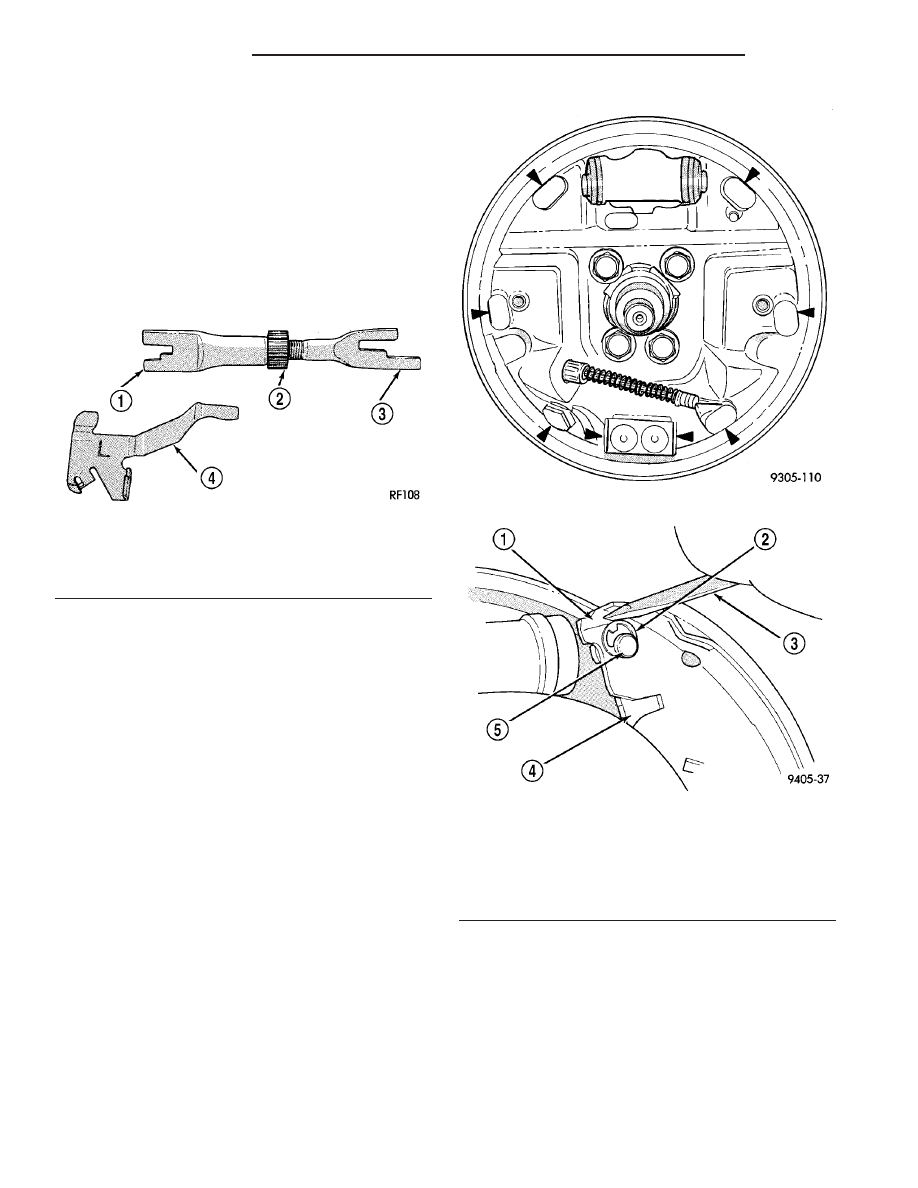Dodge Neon / Neon SRT-4. Manual - part 36

Brake shoes with lack of contact at the toe or heel
of the brake shoe lining may be improperly ground.
Clean and inspect the brake support plate and
shoe adjuster screw. Apply a thin coat of Mopar
Multi-Purpose Lubricant or equivalent to the threads
of the self-adjuster (Fig. 40). Replace the adjuster
screw if it is corroded.
NOTE: Adjuster screws are different side-to-side.
Left side adjuster screws have left-hand threads
and right side adjuster screws have right-handed
threads.
If the old brake shoe return or hold down springs
have overheated or are damaged, replace them. Over-
heating indications are paint discoloration or dis-
torted end coils.
INSTALLATION - DRUM BRAKE SHOES (REAR)
NOTE: Before proceeding with this procedure,
(Refer to 5 - BRAKES - WARNING).
(1) Begin on one side of the vehicle.
(2) Lubricate the eight shoe contact areas on the
support plate and anchor using Mopar Multi-Purpose
Lubricant or equivalent (Fig. 41).
(3) Assemble the front and rear brake shoe assem-
bly, automatic adjuster screw, and upper return
spring before installation on the vehicle.
(4)
Install the pre-assembled brake shoes, auto-
matic adjuster screw and upper return spring on the
brake support plate (Fig. 39).
(5) Install the wave washer on the pin of park
brake lever.
(6) Install the pin on the parking brake lever into
hole in rear brake shoe assembly (Fig. 42).
(7) Install both brake shoe-to-brake support plate
hold down pins and clips (Fig. 36).
(8) Install the lower brake shoe-to-anchor plate
return spring (Fig. 37).
(9) Install the automatic adjustment lever on the
leading brake shoe (Fig. 35).
(10) Install the automatic adjustment lever-to-
brake shoe spring (Fig. 34).
(11) Adjust the brake shoes out until the drum
lightly drags on the shoes when it is installed. Do not
over-adjust the brakes.
(12) Install the brake drum (Fig. 33).
(13) Repeat the above procedure to the rear brakes
on the other side of the vehicle.
Fig. 40 Adjuster Screw And Lever (Typical)
1 - OUTBOARD FORWARD
2 - SELF ADJUSTER
3 - OUTBOARD REAR
4 - SELF ADJUSTER LEVER
Fig. 41 Shoe Contact Areas on Support Plate
Fig. 42 Parking Brake Lever Pin Retaining Clip
Installation
1 - BRAKE SHOE ASSEMBLY
2 - RETAINING CLIP
3 - SCREWDRIVER
4 - PARK BRAKE LEVER
5 - PARK BRAKE LEVER PIN
5 - 26
BRAKES - BASE
PL/SRT-4
BRAKE PADS/SHOES - REAR DRUM (Continued)